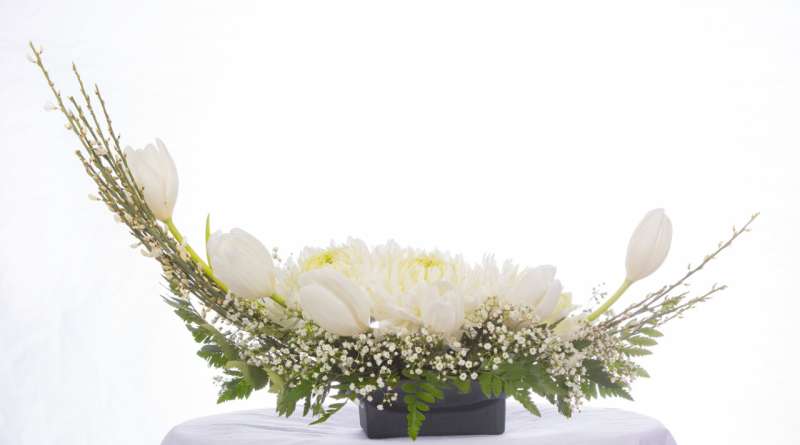This article has been reviewed according to Science X's editorial process and policies. Editors have highlighted the following attributes while ensuring the content's credibility:
fact-checked
peer-reviewed publication
trusted source
proofread
Study: Consumers, florists differ on floral arrangements

Consumer preferences in floral arrangements don't necessarily match the designs that florists are taught to make, according to a new study by researchers at North Carolina State University.
Particular flower species are important to consumers, while they also pay attention to the overall symmetry of the arrangement as well as the colors presented, the research suggests.
Specifically, the study shows that surveyed consumers absolutely love roses—and are quite willing to pay more to have them included in floral arrangements—while having little use for chrysanthemums, a Mother's Day staple.
The findings could be beneficial to florists, says Vanessa Woods, an NC State doctoral student in horticultural science and co-author of a paper describing the study.
"There's little research about what consumers prefer in floral arrangements, which is seen by many in the horticulture industry to be an art form," Woods said. "This is an industry in which products need to be sold quickly, but there's not much information on what people actually want."
The researchers brought in more than 120 people. They used eye trackers in the lab to test whether some aspects of floral design theory—used by many florists to create arrangements—are supported by consumer preferences.
The researchers tested several design theory elements, including line, whether a straight or moving line can be drawn through the center of the arrangement; symmetry, or whether the arrangement mirrors itself when you draw a straight line through the middle of the arrangement; and color, or whether the arrangements have one, contrasting, similar or assorted colored flowers.
To test these elements, the researchers provided photos of various flower arrangements and asked consumers about their preferences and the prices they'd be willing to pay for arrangements. The researchers used eye-tracking technology to get insight into the flower arrangements that captured consumer attention and where the eye was drawn to in the designs.
The results showed that consumers were more concerned with flower species than with any of the design theory elements, which was not surprising to the research team.
"Americans have a love affair with roses," Woods said. "When roses are part of an arrangement, people really value that. They think it's more expensive, they're willing to pay more for it, and they spend more time looking at that arrangement."
Consumers showed no preference for the line element—they preferred straight lines and curving lines in designs equally. However, they preferred floral arrangements that were more symmetrical rather than less. Consumers were wary of arrangements with just one flower color, preferring instead similar colors or colors close to each other on the color wheel—purples with reds, for example.
"Our study is about general preferences of consumers," said Melinda Knuth, assistant professor of horticultural science at NC State and certified floral designer. "There is still room for creativity and flair in floristry—someone's perfect bouquet might not be everyone's. We are just trying to quantify these general preferences in a way that helps the floral industry thrive. This study gives us the groundwork to begin looking at the niche preferences of floral consumers. Just like other art forms, there's variety in preferences."
The study appears in HortScience.
More information: Melinda Knuth et al, Elements of Style in Floral Arrangements: How Discerning Are Consumers Toward Floristry Design Principles and How Much Are They Willing to Pay?, HortScience (2023). DOI: 10.21273/HORTSCI17273-23
Journal information: HortScience
Provided by North Carolina State University




















